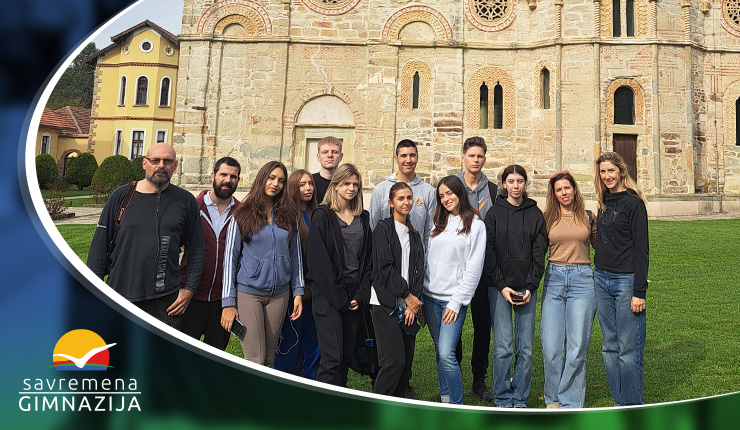
On Thursday, 17th October 2024, a field trip was organised for 10 students from Year 3 and 4. This activity aimed to provide an interdisciplinary connection between geography, biology, and Serbian language and literature, with additional elements from physical and health education, mathematics, chemistry, and art.
Exploring the Nature and Culture of the Trstenik Region
During the fieldwork, students had the opportunity to experience a hiking ascent along the southern slopes of the Gledić Mountains. The ascent included the basics of moving in a group, orientation in the environment, and recognising tracks. The students descended into a canyon and followed a mountain stream, where they gained basic knowledge of hiking and the use of forest resources. They also learned the importance of terrain awareness in case of an emergency, and how to use a geographical map and infrared thermometer to determine altitude.
One of the key aspects of the fieldwork was exploring the symbolism of the Trstenik coat of arms, which served as an introduction to learning about the area they visited. Within a biogeographical and linguistic approach, the students researched the origins of place names in the Trstenik region, including the settlements of Trstenik, Lozna, Čair, Prnjavor, and Grabovac.
In the village of Grabovac, students had the opportunity to explore the local flora and fauna, identifying plant species such as beech, horse chestnut, and ash trees. Soil parameters, such as pH value, light exposure, and moisture, were measured, with discussions on their importance for agriculture.
Creative Tasks and Language Research
As part of a creative task, the students designed a functional model of an eco-friendly house using renewable energy sources and natural materials.
Regarding Serbian language and literature, the students explored the older Štokavian dialect with the Ekavian pronunciation, identifying the specific features of the Trstenik dialect. Conversations with a representative from Matica Srpska allowed them to recognise non-standard words and grammatical features of this dialect, highlighting the linguistic richness that dialects bring.
Photo Tour and Cultural-Historical Exploration Through the Lens
Parallel to the fieldwork, a photo tour was organised as part of the Viki Loves Monuments and Viki Loves Public Art and Graves photo contest, during which the students and teachers photographed monuments and protected cultural and historical objects.
The field trip met and, in some segments, exceeded expectations. This success was due to good organisation, the preparation of field and research tasks, and the dedication of the students, who demonstrated maturity and an eagerness to explore. In the end, the students will prepare a group report and individual reflections on their newly gained knowledge.

























